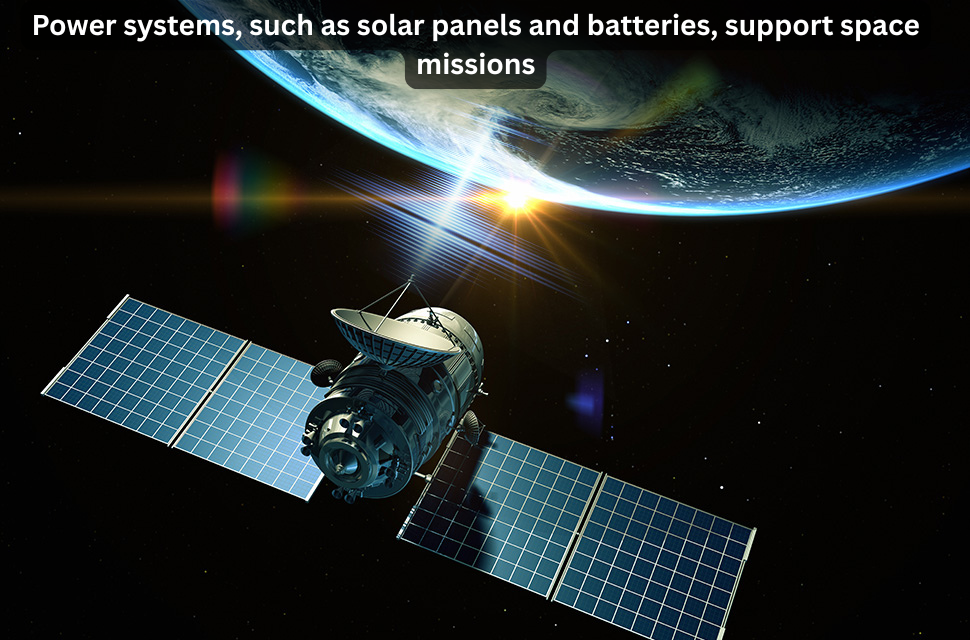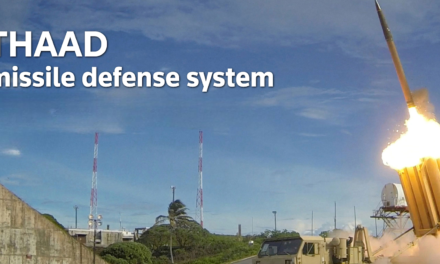Power systems, including solar panels and batteries, are vital for supporting space missions, providing the energy needed to operate spacecraft systems, maintain onboard instruments, and ensure the success of mission objectives. Here’s how these power systems function and their significance in space exploration:
1. Solar Panels
Solar panels are the primary energy source for most spacecraft, especially those operating in regions of the solar system with sufficient sunlight.
How They Work
- Photovoltaic Cells:
- Solar panels convert sunlight into electrical energy using photovoltaic cells, typically made of materials like silicon or gallium arsenide.
- Photons from sunlight knock electrons loose in the cells, generating an electric current.
Applications
- Low-Earth Orbit (LEO) Satellites:
- Satellites like GPS and communication systems rely on solar panels for continuous power in orbit.
- Interplanetary Missions:
- Spacecraft traveling within the inner solar system, such as Mars rovers, use solar panels as a lightweight and efficient power source.
Advantages
- Renewable Energy:
- Solar panels provide a virtually unlimited energy source as long as the spacecraft has access to sunlight.
- High Efficiency:
- Advanced solar panels, like multi-junction cells, achieve high conversion efficiency (up to 30-40%).
- Lightweight and Compact:
- Panels are designed to fold and deploy, minimizing spacecraft mass during launch.
Challenges
- Limited Sunlight:
- Beyond Mars, sunlight diminishes significantly, making solar panels less effective for deep-space missions.
- Degradation:
- Prolonged exposure to radiation and micrometeoroids can degrade solar panels over time.
Examples
- International Space Station (ISS):
- Equipped with large solar arrays that generate up to 120 kW of power.
- Mars Rovers (e.g., Opportunity):
- Used solar panels to power instruments and mobility systems.
2. Batteries
Batteries provide a critical backup and primary power source when solar energy is unavailable, such as during eclipses, on the night side of a planet, or for missions without access to sunlight.
How They Work
- Rechargeable Systems:
- Batteries store excess energy generated by solar panels and release it when needed.
- Common types include lithium-ion and nickel-hydrogen batteries.
Applications
- Eclipse Operations:
- Batteries ensure continuous power during periods when solar panels are not exposed to sunlight.
- Planetary Landers:
- Lander missions like InSight rely on batteries for nighttime operations.
- Deep-Space Missions:
- Used in conjunction with radioisotope thermoelectric generators (RTGs) for long-term energy storage.
Advantages
- Reliable Backup:
- Ensures uninterrupted power for critical systems during solar energy unavailability.
- Compact Energy Storage:
- Lightweight and efficient, ideal for spacecraft with limited mass capacity.
- Rechargeable:
- Batteries are recharged by solar panels, enabling repeated cycles.
Challenges
- Limited Lifespan:
- Batteries degrade over time, losing capacity with each charge-discharge cycle.
- Thermal Sensitivity:
- Batteries require precise thermal management to operate efficiently in extreme temperatures.
Examples
- Hubble Space Telescope:
- Uses rechargeable batteries to operate during Earth’s shadow periods.
- Mars Curiosity Rover:
- Employs batteries in combination with an RTG for continuous power.
3. Radioisotope Thermoelectric Generators (RTGs)
RTGs are an alternative power source for missions operating in regions where sunlight is insufficient for solar panels.
How They Work
- RTGs convert heat from the radioactive decay of isotopes (e.g., plutonium-238) into electricity using thermoelectric generators.
Applications
- Deep-Space Missions:
- Used for missions to the outer solar system, such as Voyager, Cassini, and New Horizons.
- Planetary Exploration:
- Provides continuous power for landers and rovers in environments with limited sunlight.
Advantages
- Long Lifespan:
- Capable of generating power for decades without degradation.
- Independence from Sunlight:
- Operates in dark environments, such as deep space or polar regions of planets.
Challenges
- Limited Availability:
- Dependence on scarce radioactive isotopes like plutonium-238.
- Safety Concerns:
- Requires strict handling and containment to prevent contamination.
4. Power Distribution Systems
Efficient distribution of generated power is critical to ensure that all spacecraft systems receive the necessary energy.
Components
- Power Management Unit (PMU):
- Regulates and distributes power to spacecraft subsystems, maintaining voltage stability.
- Energy Storage and Conversion:
- Balances energy supply between solar panels, batteries, and onboard systems.
Significance
- Redundancy:
- Ensures critical systems remain powered even during failures.
- Prioritization:
- Allocates power based on mission-critical priorities, such as life support or data transmission.
5. Thermal Management for Power Systems
Power systems generate heat during operation, requiring robust thermal control.
Techniques
- Radiators:
- Dissipate excess heat from batteries and electronics.
- Thermal Blankets:
- Insulate systems to maintain optimal operating temperatures.
6. Integration with Mission Design
Power systems are tailored to mission-specific requirements, including:
- Orbital Missions:
- Depend primarily on solar panels due to consistent exposure to sunlight.
- Deep-Space Missions:
- Use RTGs or hybrid systems for sustained operations far from the Sun.
- Lander and Rover Missions:
- Combine solar panels, batteries, and, in some cases, RTGs to ensure continuous power.
7. Advances in Space Power Systems
- Flexible Solar Arrays:
- Lightweight and foldable designs increase efficiency and deployment capability.
- Solid-State Batteries:
- Offer higher energy density and longer lifespans than traditional lithium-ion batteries.
- Dynamic RTGs (DRTGs):
- Advanced RTGs with higher conversion efficiencies for future deep-space missions.
- Wireless Power Transfer:
- Emerging technology for powering devices on planetary surfaces without direct connections.
Conclusion
Power systems such as solar panels, batteries, and RTGs are indispensable for space missions, enabling spacecraft to operate in diverse and challenging environments. Solar panels provide renewable energy for near-Earth and interplanetary missions, while batteries ensure power continuity. RTGs extend mission capabilities into regions with limited sunlight. As space exploration expands, advancements in power technologies will play a critical role in supporting more ambitious and sustainable missions.
Hashtags
#SpacePowerSystems #PowerForSpaceMissions #EnergyInSpace #AerospacePowerTech #SolarPanelsInSpace #SolarPowerTech #SpacecraftSolarPanels #SolarEnergyInSpace #SpacecraftBatteries #EnergyStorageSystems #AdvancedBatteries #SustainableSpacePower #EcoFriendlySpaceTech #RenewableEnergyForSpace #EnergyEfficiency #PowerOptimization













